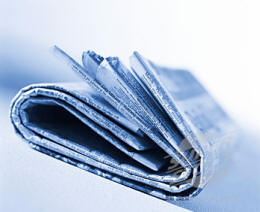| |
|
Deflation won't
happen here; at least not if Federal Reserve (Fed) Chairman's Ben
Bernanke's plan pans out. Deflation is considered a persistent decline
in prices of goods and services; in a speech in 2002, Bernanke outlined
the steps he would take if the U.S. ever faced the threat of deflation.
Deflation is suffocating anyone holding debt as the debt burden becomes
more difficult to finance with shrinking income; in contrast, inflation
bails out those who have a lot of debt. In our assessment, fighting
deflation is the Fed's top priority now; the
latest minutes from the Fed's Open Market Committee (FOMC) meeting
state: Indeed, some [FOMC members] saw a risk that over time inflation
could fall below levels consistent with the Federal Reserve's dual
objectives of price stability and maximum employment. [..] the limited
scope for reducing the [Federal Funds] target further were reasons for a
more aggressive policy adjustment; [..] more aggressive easing should
reduce the odds of a deflationary outcome.
To understand how "more aggressive" easing is possible when interest
rates are close to zero, a little background is required on how the Fed
is "printing" money. Until a few weeks ago, the Fed's main tool to
control interest rates was to manage the Federal Funds target rate by
engaging in "open market operations" to buy or sell short-term
government securities, mostly Treasury Bills. These operations are based
on the principle that banks have cash deposits as reserves to lend
money; for any dollar on deposit, a multiple may be provided as loans;
the basic principal of modern banking assumes that not all depositors
will want their money back simultaneously; a 'run on the bank' would
occur in such a situation that would either result in the Fed coming to
the rescue or the bank's failure.
The Fed can now "tighten" monetary policy by selling, say, Treasury
Bills, to the bank; in return, the Fed will receive the cash; and the
bank will have less cash available to lend - because of the multiplier
effect, small actions by the Fed tend to have - albeit with a delay of a
couple of months - significant impact on lending and thus economic
activity. There are no coins exchanging hands; these are entries into
the balance sheets at the bank and the Fed. By making cash less
available in the banking system, the cost of borrowing, i.e. interest
rates, goes up.
Conversely, the Fed can buy Treasury Bills from banks and supply them
with cash (providing liquidity) in return. This unleashes lending power
at the banks and lowering the cost of borrowing.
This world was shaken when Congress, as part of passing the TARP bank
bailout program, authorized the Fed to pay interest on deposits at the
Federal Reserve. Theoretically, even if the Fed provides massive amounts
of liquidity, interest rates should not go to zero as banks should
always be able to go to the Fed and receive interest on deposits there.
The idea is that the banking system could be flooded with liquidity
while ensuring that interest rates don't go down to zero. Fed officials
are fairly miffed that the market hasn't quite worked that way as short
term Treasury bills have hovered close to zero with the official target
Federal Funds rate at 1% and the interest paid on deposits at the Fed at
or near 1%. Note that many of the new programs the Fed has introduced
have little or no historic precedent; as a result, the programs may not
be as effective or may have unintended consequences.
citeste tot articolul...
|
